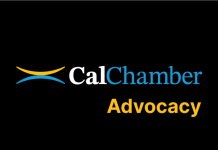![]() California’s famously volatile tax machine has delivered another dose of unpredictability. According to the nonpartisan Legislative Analyst’s Office (LAO), the state suffered a $26 billion revenue shortfall in the last fiscal year, and faces a cumulative three-year shortfall of $58 billion through the 2024–25 fiscal year.
California’s famously volatile tax machine has delivered another dose of unpredictability. According to the nonpartisan Legislative Analyst’s Office (LAO), the state suffered a $26 billion revenue shortfall in the last fiscal year, and faces a cumulative three-year shortfall of $58 billion through the 2024–25 fiscal year.
The income tax deadline for last year was postponed for most California taxpayers, leaving state leaders in the dark about revenue trends during a period of economic uncertainty. After payments were finally counted last month, tax officials revealed that income tax collections fell by a whopping 25% from the previous year.
According to the LAO experts, “This decline is similar to those seen during the Great Recession and dot-com bust.”
Analysts attributed the downturn, which began in 2022, to the headwinds created by the Fed’s relentless hikes in interest rates, which has increased borrowing costs and cooled the real estate market, and a moribund stock market, which dampened capital gains. According to the LAO, the number of California companies that went public in 2022 and 2023 is down over 80% from 2021. California’s enormous fiscal dependence on upper income taxpayers means that any reversal of trends in asset transactions will have a disproportionate impact on the state budget.
These trends have also contributed to a slight worsening of the state’s employment picture, which adds to the income tax shortfall. Budget analysts also raised red flags on taxable sales, revealing that sales tax collections have been essentially flat, despite inflation-fueled growth in consumer prices.
These economic red flags and revenue shortfalls have occurred even as the economy has not fallen into recession. LAO experts believe “there is a significant risk the current weakness could continue into next year.” They further warn that their estimate is subject to substantial uncertainty, with a possibility that revenues next year could fall another $30 billion below these estimates.
The Newsom Administration is deeply involved in preparing next year’s state budget proposal, and legislative budget committee staff are undoubtedly exploring options to present to legislative leaders. The Governor’s insistence over the past couple years on directing revenues to reserves and one-time spending programs will somewhat reduce fiscal pressures, and some of the one-time spending may be simply eliminated or delayed. But if the trends identified by the LAO persist through next year, fights over spending priorities and tax increases will take center stage.


